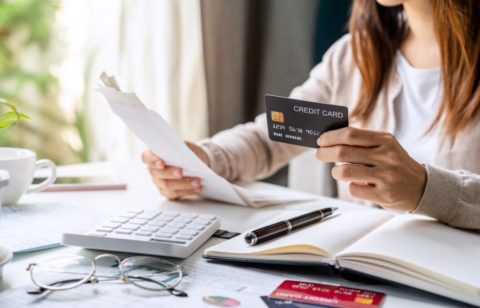Feeling anxious about someone stealing your personal information? Identity theft is a concern for many, but don’t worry! This guide shares eight practical tips to safeguard your personal information and keep your identity safe, including insights from the IRS. Let’s get started!
Identity Theft Prevention Tips
1. Lockdown Your Physical Files
Important papers like birth certificates, passports, and Social Security cards deserve extra protection. Lock them away in a safe deposit box at the bank or a secure safe at home. Any document with your name and number is valuable, so treat it like gold! Before you toss any receipts, bank statements, or even old bills, shred them first to protect your information.
2. Guard Your Paper Trail
Go digital with your bank statements and bills whenever possible. Get new checks directly at the bank instead of by mail. Make sure to grab your mail as soon as it arrives and don’t leave outgoing mail sitting in your mailbox for anyone to see.
3. Be a Financial Detective
Small charges on your bank or credit card statement may seem harmless, but they could be a thief testing the waters. To be safe, look carefully at your statements every week, searching for anything unusual, even if it’s just a few dollars. Don’t let anything suspicious slip past you!
4. Eyes Open at the ATM
Using an ATM can be risky, so keep your eyes peeled! Before using the machine, scan for anything strange, like a bulky card slot or someone hanging around too long. If something feels off, trust your instincts and walk away. Don’t hesitate to tell your bank about anything suspicious you see!
5. Handle Your Cards With Care
Make your cards thief-proof! Use a permanent marker to sign your name on the back of your credit and debit cards – it’ll make it harder for others to erase and use them. New cards often have a “Please Activate” sticker on them. Don’t peel it off right away. Thieves might skip cards they think are inactive, giving you extra time to safely activate them yourself.
6. Be a Smart Traveler
Steer clear of public Wi-Fi. Stick to private connections when you’re out and about. If you must use an ATM, watch out for sneaky onlookers trying to steal your information.
7. Go Paperless
Going paperless isn’t just good for the environment, it’s good for your security. Opt for electronic statements, bills, and receipts. Even a crumpled receipt can be a treasure map for thieves. Shred anything with your name and numbers on it, no exceptions.
8. Lookout at the Checkout
If a cashier takes forever with your card, pay attention. They may be using a skimming device to steal your information. Keep a close eye on your card when you get it back and don’t be afraid to speak up if something feels wrong. Your voice may be your best defense!
Bonus Tip: Consider Insurance Carefully
ID theft insurance may feel like a safety blanket but read the details closely. It usually helps fix the mess after a theft, but doesn’t replace stolen money. Check if your home insurance or work benefits already offer identity protection. Remember, the best way to stay safe is to be extra careful with your information!
What the IRS Wants You to Know About Identity Theft
- They’ll never contact you about ID theft via email.
- Investigate suspicious IRS letters immediately.
- Multiple tax returns or unrecognized income could be red flags.
Knowing how to protect your personal information is crucial. Take control and build a strong defense against identity theft by staying alert and following these simple tips. Share this knowledge with your family and friends – together, we can make identity theft a thing of the past.







